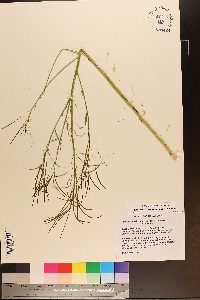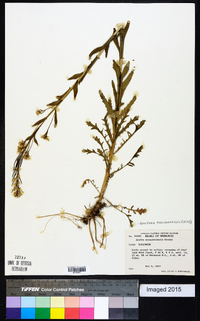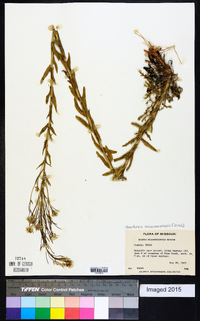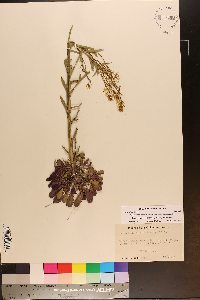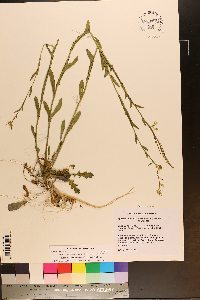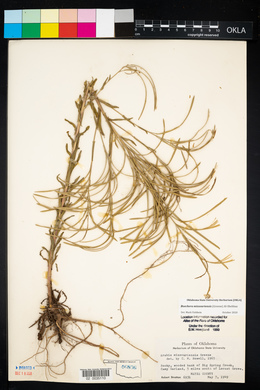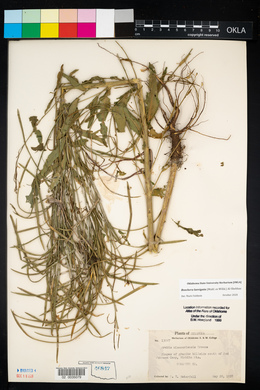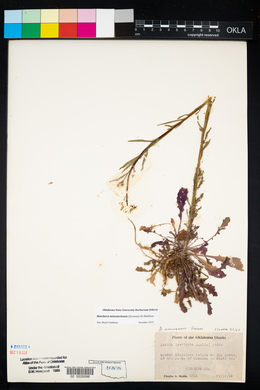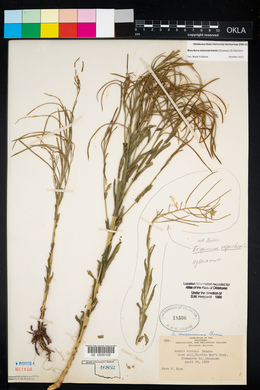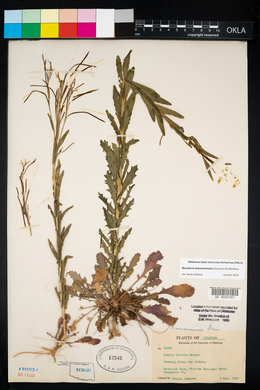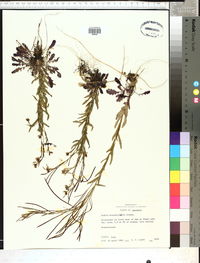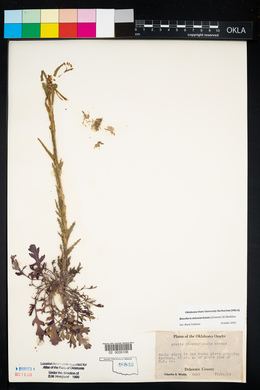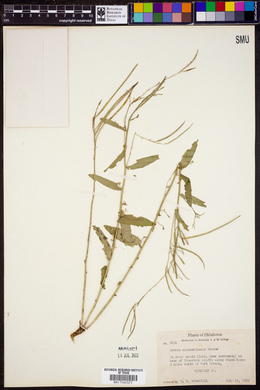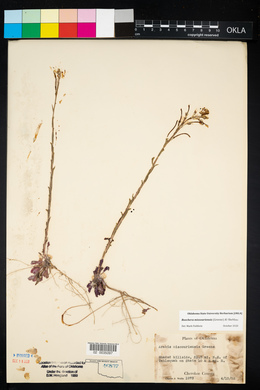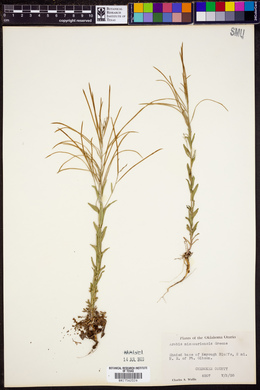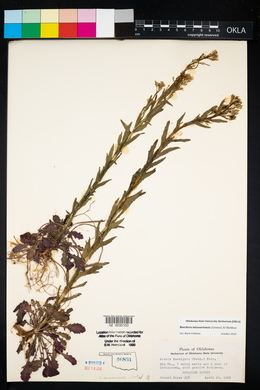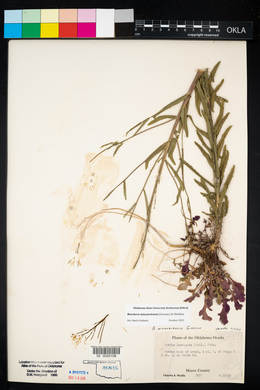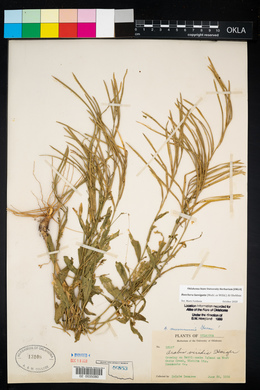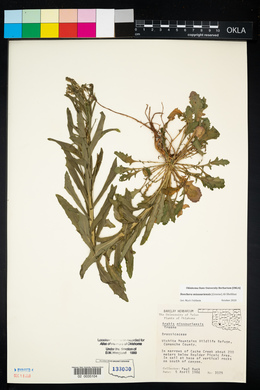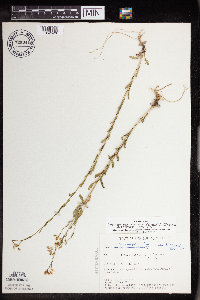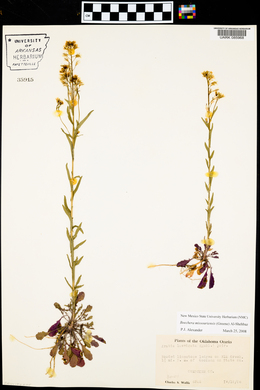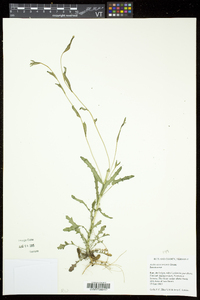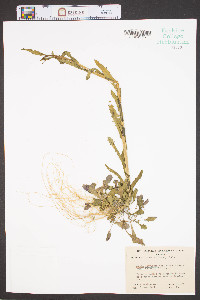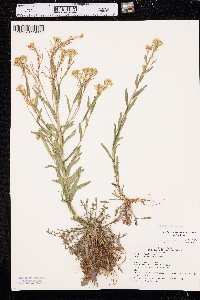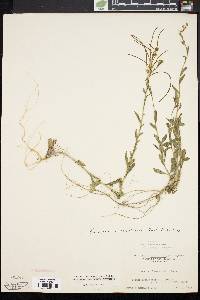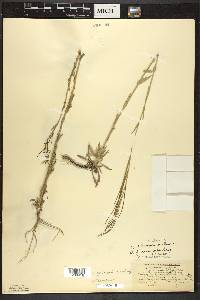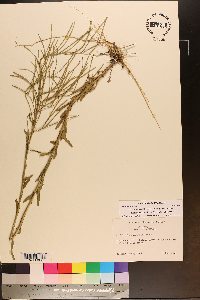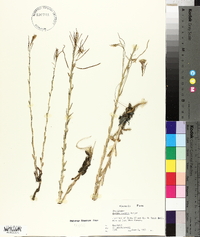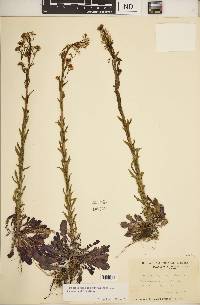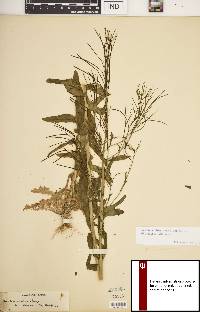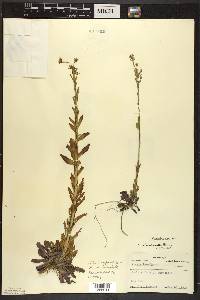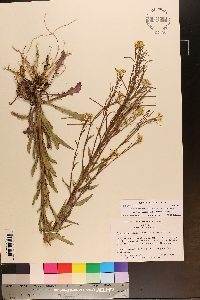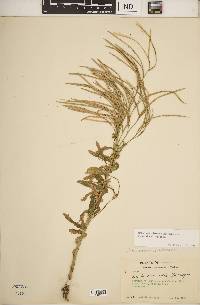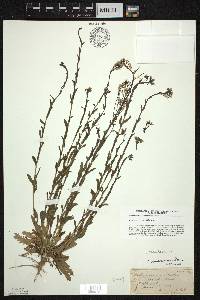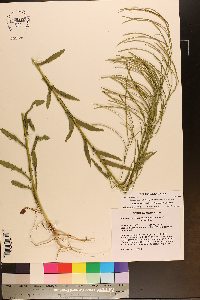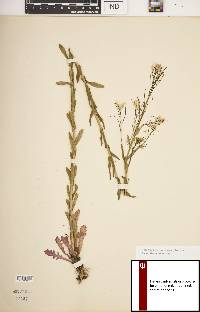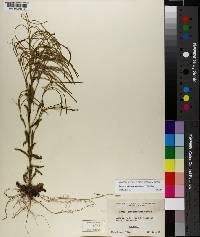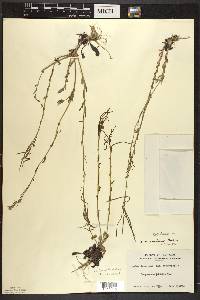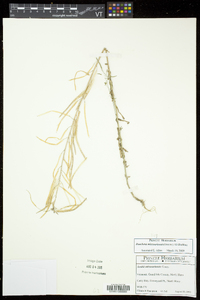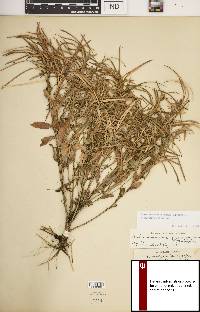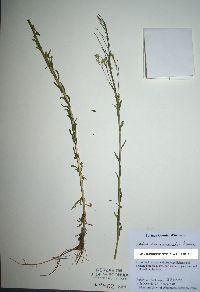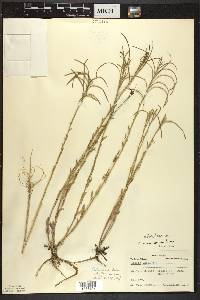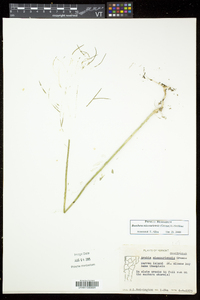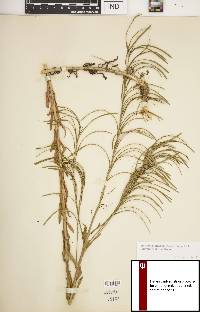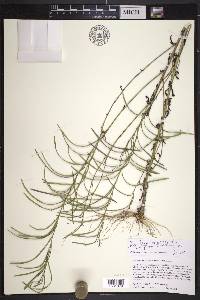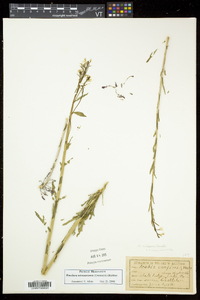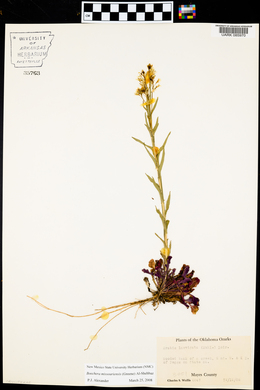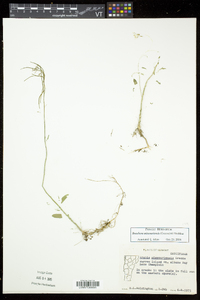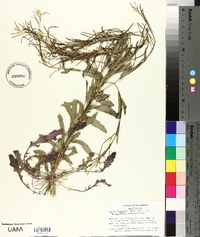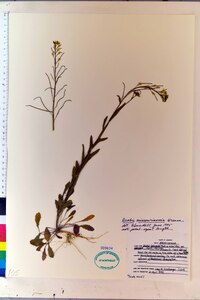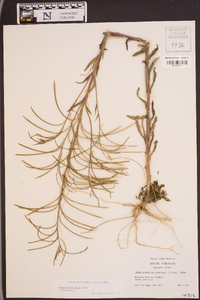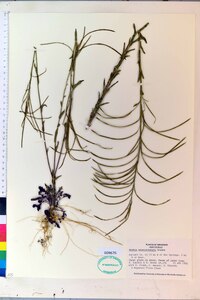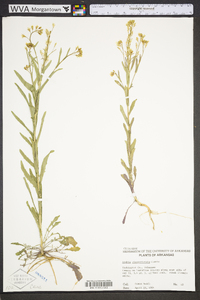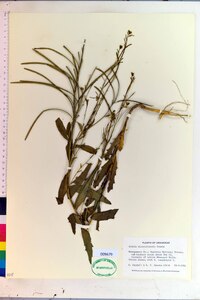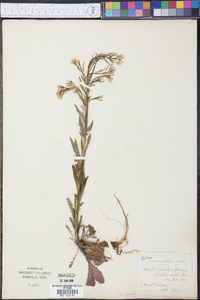Borodinia missouriensis
|
|
|
|
Family: Brassicaceae
Green False Rockcress, more...green rockcress
[Arabis laevigata var. missouriensis (Greene) H.E.Ahles, moreArabis missouriensis Greene, Arabis missouriensis var. deamii (M. Hopkins) M. Hopkins, Arabis missouriensis var. missouriensis , Arabis viridis Harger, Arabis viridis var. deamii M. Hopkins, Arabis viridis var. heterolhylla (Farw.) Farw., Arabis viridis var. heterophylla (Nutt.) Farw., Arabis viridis var. viridis , Boechera missouriensis (Greene) Al-Shehbaz] |
Biennials; short-lived; sexual; caudex not evident. Stems usually 1 per plant, arising from center of rosette near ground surface, 2-7.5 dm, sparsely pubescent proximally, trichomes simple, to 0.5 mm, or glabrous throughout. Basal leaves: blade oblanceolate, 5-18 mm wide, margins lyrate-pinnatifid, often ciliate-mucronate on lobes, trichomes minute, surfaces glabrous or sparsely pubescent, trichomes simple, 0.1-0.5 mm. Cauline leaves: 10-45, often concealing stem proximally; blade auricles 1-5 mm, surfaces glabrous. Racemes 18-47 -flowered, sometimes branched. Fruiting pedicels suberect to divaricate-ascending, straight or slightly curved, 5-13 mm, glabrous. Flowers ascending at anthesis; sepals glabrous; petals white, 5-10 × 1-1.5 mm, glabrous; pollen ellipsoid. Fruits ascending to divaricate-ascending, not appressed to rachis, not secund, curved, edges parallel, 6-11 cm × 1.5-2 mm; valves glabrous; ovules 60-86 per ovary; style 0.1-1 mm. Seeds uniseriate, 1.2-2 × 1-1.2 mm; wing continuous, 0.1-0.4 mm wide. Flowering Mar-Jun. Rocky bluffs, wooded slopes, valley bottoms; 50-300 m; Ark., Conn., Ga., Ill., Ky., Mass., Mich., Minn., Mo., N.Y., N.C., Okla., S.C., Wis. Boechera missouriensis occasionally has been treated as a variety of B. laevigata. With its significantly longer petals (5-10 versus 3-5 mm) and distinctive, lyrate-pinnatifid basal leaves that persist well beyond anthesis, it warrants recognition as a species.
Biennial herb 20 cm - 0.5 m tall Flowers: in branched clusters, creamy white or yellowish white, 6 - 8 mm long, to 2 mm wide, nearly to fully twice as long as the sepals. Petals four. Stamens six. Fruit: a narrow pod, at first upright, becoming curved and widely spreading, 5 - 9 cm long, 1.2 - 2 mm wide, on a 5 - 10 mm long stalk, flat. Seeds in one row, oblong-squarish, 1.5 - 2 mm long, conspicuously winged. Basal leaves: in a dense rosette, stalked (stalks purplish), to 8 cm long, spatula-shaped, toothed to pinnately lobed (leaf shape variable), sometimes sparsely hairy. Stem leaves: alternate, stalkless, upright, to 4 cm long, lance-shaped to linear with a lobed base, lower leaves sparsely sharp-toothed, hairy. On average there are about 25 leaves below the first cluster of flowers. Similar species: The similar Boechera laevigata differs by having petals that barely exceed the sepals. Habitat and ecology: Rare in the Chicago Region. Found growing on sandy and gravelly slopes. Outside the Chicago Region it is found in moist or dry, rocky or sandy woods. Occurence in the Chicago region: native Etymology: Boechera refers to the Danish botanist, Tyge Bocher. Missouriensis means "of or from Missouri." Author: The Morton Arboretum Biennial, 2-5 dm, glabrous to sparsely hairy; basal lvs persistent, dentate to pinnatifid; cauline lvs numerous (averaging 25 below the first fl), erect, lanceolate to linear, the lower commonly with a few sharp teeth, the upper mostly entire; pet creamy-white, 6-8 mm, nearly or fully twice as long as the sep; mature racemes lax and elongate, with ascending pedicels 5-10 mm; frs at first erect, becoming widely divergent and commonly arcuate, 5-9 cm נ1.2-2 mm, flat, the valves 1-nerved to or beyond the middle; seeds in 1 row, quadrate-oblong, 1.5-2 mm, conspicuously winged. Moist or dry, rocky or sandy woods and hills; Me. to N.Y. and N.J.; Ind., Wis., and Mich. to Mo., Ark. and Okla. May-July. (A. viridis) Gleason, Henry A. & Cronquist, Arthur J. 1991. Manual of vascular plants of northeastern United States and adjacent Canada. lxxv + 910 pp. ©The New York Botanical Garden. All rights reserved. Used by permission. From Flora of Indiana (1940) by Charles C. Deam This species is probably not very rare in northern Indiana since I have it from three counties. My specimens are from dry sandy and gravelly slopes. ...... Indiana Coefficient of Conservatism: C = 10 Wetland Indicator Status: n/a |

